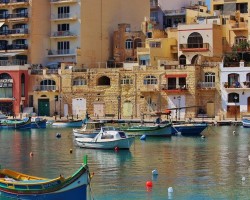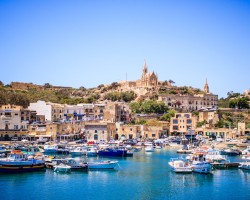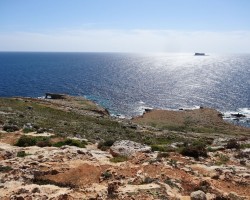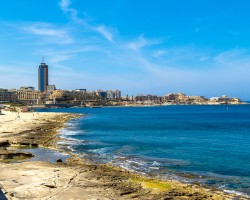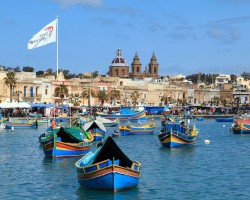Best time to go to Malta for a perfect weather and where to go?
When is the best time to go to Malta?
The climate in Malta is generally pleasant. Throughout the year, temperatures there are higher than the averages in France. Therefore, travelers fly to this destination during any season. However, the best time to visit Malta is in May-June, and then in September-October. There are good weather conditions, but also fewer tourists, making the trip even more attractive. The summer season coincides with the peak tourist season. Indeed, between mid-June and late August, hotel and airline prices are high. Additionally, a large number of tourists flock to the archipelago's beaches. The sun shines daily, and the water temperature is ideal for swimming. If you plan to travel to Malta during this period, it is advisable to book your stay in advance as most hotels are fully booked. Your travel budget will also be higher. Wondering when to visit Malta to avoid the crowds? Besides the months before and after the summer holidays, know that spring is also a good idea. Indeed, the beaches are still deserted, and the water quality makes swimming even more enjoyable. A stay in autumn or winter is also possible, although the weather is disrupted by some showers. Finally, during Easter Week in April, Malta sees a significant influx of visitors. This period, rich in events, never fails to attract culture enthusiasts.
Annual weather in Malta
For information about the climate and the weather city by city in Malta for a specific month, click on the corresponding line below:
| Month | Our opinion | View Details | |||
|---|---|---|---|---|---|
| January | 59°F to 61°F | good weather | |||
| February | 61°F | good weather | |||
| March | 59°F to 61°F | good weather | |||
| April | 65°F | good weather | |||
| May | 68°F | good weather* | |||
| June | 74°F to 76°F | perfect weather | |||
| July | 79°F to 83°F | perfect weather | |||
| August | 83°F | perfect weather | |||
| September | 81°F | perfect weather | |||
| October | 74°F to 76°F | good weather | |||
| November | 70°F | good weather | |||
| December | 65°F | good weather |
Best time to travel to Malta by cities
Climate and Weather in Malta
Located in the heart of the Mediterranean, between Sicily and eastern Tunisia, the Republic of Malta benefits from a Mediterranean climate. Like Cyprus, it enjoys mild temperatures all year round and a majority of sunny days.
Indeed, the climate in Malta is characterized by constant mildness in summer and winter. It is rare for the average temperature to drop below 15°C (59°F) , even in January.
Furthermore, there are few climate differences between regions and the various islands of the archipelago.

Climate in Malta: Summer
The weather in Malta in summer is ideal. Indeed, it is a hot and dry season with temperatures ranging between 25 and 30°C (86°F) approximately.
The climate is arid from June to August: there is only one shower throughout the entire month.
Furthermore, the heat is tempered by the presence of sea breezes, especially along the coasts. Thus, it never gets too hot, and one can fully enjoy their trip.
During days when the mercury tends to rise, you can enjoy the superb beaches of the archipelago. In fact, the sea temperature is around 26 °C between July and September, making swimming idyllic.
Climate in Malta: Winter
Winter in Malta is enough to make others envious. The climate is mild and sunny, making this destination pleasant all year round for a stay.
Indeed, temperatures are around 21 °C in November, 18°C (65°F) in December, and 15°C (59°F) in January. As you can see, snow and frost are not part of the landscape... Thus, Malta is the ideal destination to escape the cold and unpleasant winters of the rest of Europe. Its winter temperatures are among the mildest in the old continent!
However, winter is a rather rainy season in Malta. For example, there are 10 rainy days per month or more in the archipelago between December and February. Nevertheless, the sun tends to quickly reclaim its place in the Maltese sky.
Finally, in winter, a northeast wind can blow regularly, tending to push away the clouds but also making the sea more agitated.
Climate in Malta: Spring
Winter is not particularly cold, but the temperature remains quite cool until March in Malta. Thus, April proudly announces the beginning of spring.
Temperatures reach at least 17 °C and showers become less frequent. Moreover, vegetation comes back to life, offering contrasting and photogenic landscapes. Spring is one of the ideal periods to visit the Republic of Malta.
In May and June, the first warm weather is felt, and the sun shines for more than 8 hours a day on the archipelago. It is then possible to engage in outdoor activities without worrying about the weather.
Despite these exceptional weather conditions, the atmosphere remains very peaceful. Spring is not a highly frequented season by tourists, which adds even more charm to this destination.
However, in spring, the sea temperature is slightly cooler than in autumn, but swimming is still possible, with the sea around 19°C (67°F) in May.
Climate in Malta: Autumn
Autumn is a season that will delight travelers. The summer heat decreases, but the climate remains very mild. While there are some scattered showers, blue skies are more often the norm.
The months of September and October continue the summer trend: sun, temperatures ranging between 23 and 28°C (83°F) , and an ideal sea for swimming. It can even happen that the sea is warmer than the air at times.
Moreover, in November, as cold weather arrives in France, temperatures of around 20 to 22°C (72°F) can be found in Malta, with the sea at 22°C (72°F) . If you are looking to extend your summer, this is where you should go to enjoy pleasant weather conditions.
During autumn in Malta, there are also some episodes of sirocco. This wind, coming from the African desert, blows at the end of summer and makes the air a bit more stifling.
As you can see, Malta has an ideal climate that contributes to the sweetness of life characteristic of the archipelago. You can never go wrong by choosing this destination!
Temperatures and rainfall in Malta
On these 3 graphs, we present the evolution of temperatures of Malta and month-by-month rainfall for the cities of Valletta, Gozo, Ghar Lapsi, Golden Bay and Hondoq Bay, as well as the month-by-month sea temperature for coastal cities.
Peak visitor numbers and tourist seasons in Malta
Find out when Malta has its high tourist season (the period when the influx of tourists is highest) and off-peak tourist season using our data and figures.
Tourist seasons in Malta
The months with low numbers of tourists are: January, February, March, April, November and December. The number of visitors to Malta is high in: May, June, July, August, September and October.
- Very low season in Malta: January, February, March and November.
- Low season in Malta: April and December.
- High season in Malta: May and June.
- Peak season in Malta: July, August, September and October.
Figure: Visitor index for Malta month by month
Average price for flights to Malta
A return flight between London and Valletta is generally cheaper if you go in january ($ 80 on average): this is the best time for travellers on a tight budget. In contrast, you may end up paying $ 132 more for your airline ticket to Valletta if you go in august.
Where to go in Malta?
This table allows you to see the maximum temperature for each city and our opinion on the weather month by month (see colour legend below the table).
| Cities | jan. | feb. | mar. | apr. | may | jun. | jul. | aug. | sep. | oct. | nov. | dec. |
| Valletta | 61°F | 61°F | 61°F | 65°F | 68°F | 76°F | 81°F | 83°F | 81°F | 76°F | 70°F | 65°F |
| Gozo | 61°F | 61°F | 61°F | 65°F | 68°F | 76°F | 81°F | 83°F | 81°F | 76°F | 70°F | 65°F |
| Ghar Lapsi | 61°F | 61°F | 61°F | 65°F | 70°F | 76°F | 83°F | 85°F | 81°F | 76°F | 70°F | 65°F |
| Golden Bay | 61°F | 61°F | 61°F | 65°F | 70°F | 76°F | 83°F | 85°F | 81°F | 76°F | 70°F | 65°F |
| Hondoq Bay | 61°F | 61°F | 61°F | 65°F | 68°F | 76°F | 81°F | 83°F | 81°F | 76°F | 70°F | 65°F |
| Luqa | 61°F | 61°F | 61°F | 65°F | 70°F | 76°F | 83°F | 85°F | 81°F | 76°F | 70°F | 65°F |
| Manikata | 61°F | 61°F | 61°F | 65°F | 70°F | 76°F | 83°F | 85°F | 81°F | 76°F | 70°F | 65°F |
| Mdina | 61°F | 61°F | 61°F | 65°F | 70°F | 76°F | 83°F | 85°F | 81°F | 76°F | 70°F | 65°F |
| Mosta | 61°F | 61°F | 61°F | 65°F | 68°F | 76°F | 81°F | 83°F | 81°F | 76°F | 70°F | 65°F |
| San Giljan | 61°F | 61°F | 61°F | 65°F | 68°F | 76°F | 81°F | 83°F | 81°F | 76°F | 70°F | 65°F |
| San Lawrenz | 61°F | 61°F | 61°F | 65°F | 68°F | 76°F | 81°F | 83°F | 81°F | 76°F | 70°F | 65°F |
| Sliema | 61°F | 61°F | 61°F | 65°F | 68°F | 76°F | 81°F | 83°F | 81°F | 76°F | 70°F | 65°F |
| Victoria (Ir-Rabat) | 61°F | 61°F | 61°F | 65°F | 68°F | 76°F | 81°F | 83°F | 81°F | 76°F | 70°F | 65°F |
| Vittoriosa (Il-Birgu) | 61°F | 61°F | 61°F | 65°F | 68°F | 76°F | 81°F | 83°F | 81°F | 76°F | 70°F | 65°F |
| Birkirkara | 61°F | 61°F | 61°F | 65°F | 68°F | 76°F | 81°F | 83°F | 81°F | 76°F | 70°F | 65°F |
| Marsaskala | 61°F | 61°F | 61°F | 65°F | 68°F | 76°F | 81°F | 83°F | 81°F | 76°F | 70°F | 65°F |
| Marsaxlokk | 61°F | 61°F | 61°F | 65°F | 70°F | 76°F | 83°F | 85°F | 81°F | 76°F | 70°F | 65°F |
| Mellieha | 61°F | 61°F | 61°F | 65°F | 68°F | 76°F | 81°F | 83°F | 81°F | 76°F | 70°F | 65°F |
| Mgarr | 61°F | 61°F | 61°F | 65°F | 68°F | 76°F | 81°F | 83°F | 81°F | 76°F | 70°F | 65°F |
| Qormi | 61°F | 61°F | 61°F | 65°F | 70°F | 76°F | 83°F | 85°F | 81°F | 76°F | 70°F | 65°F |
Legend:
perfect weather
good weather
About Malta
What can I do in Malta?
Beaches / swimming
Nature and countryside
Culture and heritage
Sports
Family travel
Crafts / shopping
Gastronomy
Nightlife
Is this weather information for Malta reliable?
Climate data for Malta has been gathered every day since January 2009. The analysis of these meteorological data for Malta allows us to determine the average for each month in Valletta, Gozo, Ghar Lapsi, Golden Bay, Hondoq Bay, Luqa, Manikata, Mdina, and 19 other cities.
So yes: this data is reliable except in cases of temporary climate disruption in the region.

